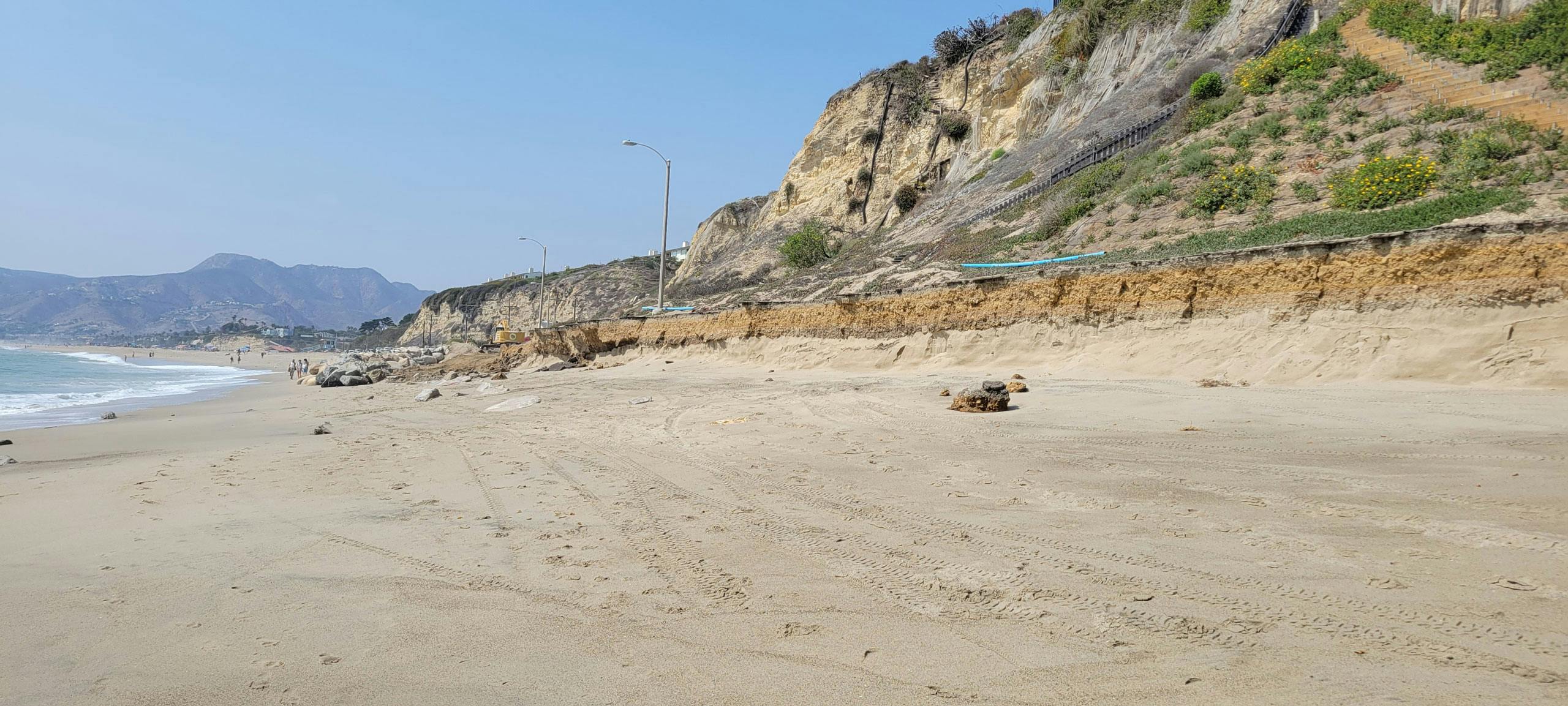- English
- Spanish
- Korean
- Filipino
- Armenian
- Chinese (Simplified)
Climate Change Affecting Santa Monica Bay
Climate change places stress upon the seven Bay habitats and their animals and plants in a multitude of ways, thereby affecting the quality of life for all Los Angeles residents and visitors. How does this occur?
Climate change is caused globally by increased concentrations of greenhouse gases in our atmosphere, including carbon dioxide, methane, nitrous oxides, and sulfur oxides. These levels are exasperated by a wide variety of human activities and behaviors. Although these gases trap heat and cause global warming, the planet’s response to this trapped heat varies, leading to a wide range of environmental changes.
The disruptive changes driven by climate change include:
- Precipitation changes driven by warmer weather and fluctuations in ocean water temperature, leading to frequent intense storms and wave events that cause increased rates of erosion, coastal flooding, suspension of sediment and burial of nearshore reefs
- Pervasive drought-like conditions punctuated by heavy storms
- Reduced flows and increased water temperature in our coastal streams and rivers
- A chemical change in the ocean water that makes it more acidic (this is caused by absorption of carbon dioxide from the atmosphere)
- Melting glaciers and ice caps that, combined with the expansion of water as it absorbs heat, causes a sea level rise
Key Habitats Impacted by Climate Change
SMBNEP and its many partners have many ongoing projects that are lessening the impacts of climate change and improving the health of our local habitats, including beaches and dunes, kelp, seagrass, wetland, and stream restoration projects.
Learn More
In 2016, TBF, with support from the Santa Monica Bay Restoration Commission (SMBRC), conducted a broad, risk-based Climate Change Vulnerability Assessment (CCVA) of the objectives in the SMBNEP’s strategic plan, which identified the risks associated with each individual objective and goal.
Additionally, it identified the strengths and weaknesses of existing objectives to manage and adapt to the impacts of climate change. The SMBNEP’s CCVA was used as an important tool to inform a substantial revision to their Comprehensive Conservation and Management Plan and has guided the development of several resilience projects.
